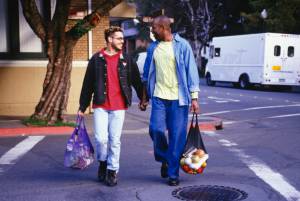Montreal’s Gay Village is in Decline, but is That a Bad Thing?
 Montreal’s Gay Village (also called Le Village) is one of the biggest in North America. It is located on the east side of the city. Before the influx of gay and lesbian businesses, it was a poor working-class neighborhood. The heyday of the area was in the late 1990s. The revenue generated by stores, bars and clubs in Le Village has been dropping since then. A number have closed and the ones that remain are being forced to reinvent themselves to stay in business. However, is the decline a positive sign? Many believe it is the result of the lesbian, gay, bisexual and transgender lifestyle being more broadly accepted and LGBT people feeling comfortable in other parts of Montreal besides just Le Village.
Montreal’s Gay Village (also called Le Village) is one of the biggest in North America. It is located on the east side of the city. Before the influx of gay and lesbian businesses, it was a poor working-class neighborhood. The heyday of the area was in the late 1990s. The revenue generated by stores, bars and clubs in Le Village has been dropping since then. A number have closed and the ones that remain are being forced to reinvent themselves to stay in business. However, is the decline a positive sign? Many believe it is the result of the lesbian, gay, bisexual and transgender lifestyle being more broadly accepted and LGBT people feeling comfortable in other parts of Montreal besides just Le Village.
A Cultural Shift
Attitudes toward the LGBT community have dramatically evolved in Canada and countless other places in the world over the past few decades. In the months before the 1976 Summer Olympics in Montreal, a number of gay clubs and bars were forced to close by authorities. These actions pushed many lesbians and gays to a new area of the city. Several bars were also shut down in 1987 under questionable charges; numerous proprietors and customers were arrested. Even as late as the early 1990s, many in the Montreal LGBT community still felt stigmatized. Prior to 2006, gay establishments were one of the few places gays felt comfortable meeting openly; LGBTs were still subject to discrimination and harassment in other parts of Montreal and Canada. For the most part, that is no longer the case. But as a result, shops, bars and clubs in Le Village have substantially fewer customers. Area merchants increasingly depend on summer tourism to stay in business.
Some Le Village proprietors believe the district will remain largely gay for the foreseeable future, but they also recognize the importance of attracting more people to live and work there. They also feel it is necessary for investors to support other types of businesses besides nightclubs.
Other Gay Districts
Montreal’s Gay Village is one of many worldwide. Some are experiencing issues similar to that of Le Village. Others have become very chic, expensive places to live, with original residents and businesses being pushed out due to exorbitant real estate prices.
- Toronto
The intersection of Church and Wellesley streets is the location of the largest gay district in Toronto, but it has to compete with other gay enclaves that have popped up throughout the city.
- San Francisco
The Castro District in San Francisco is one of the earliest established gay villages in the United States. It continues to be one of the leading international symbols of LGBT activism.
- New York
Several places around New York City are considered gay districts, including Chelsea and Greenwich Village. Greenwich Village was New York’s original gay neighborhood, but many of the earlier inhabitants have had to move because it is now one of the priciest places to live in the city.
- London
Soho is located in London’s West End. It has been a world-famous entertainment district for years and is home to a number of well-known theaters and movie companies. Prior to the 1980s, it was much racier due to the booming sex industry and raucous nightlife. While some gay bars, nightclubs and sex shops are still there, Soho has become highly gentrified in the past few decades.
- Washington, D.C.
Dupont Circle is another important site in the history of gay rights. It has become more mainstream in recent years and now has many hip coffee houses and trendy restaurants.
Many business owners in Montreal’s Gay Village are struggling to stay afloat. While this is unfortunate for them, the encouraging news is that Montreal gay, lesbian, bisexual and transgender people appear to feel less stigmatized by their lifestyle choices. They don’t feel limited to Le Village for shopping, dining and fun.

